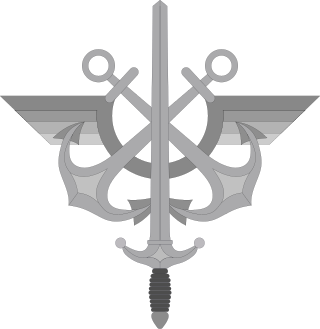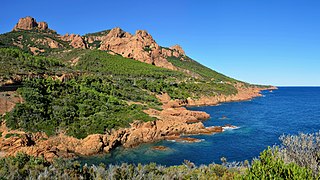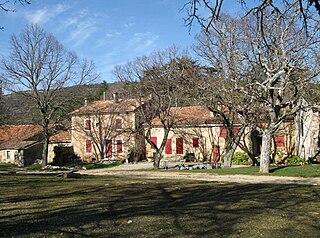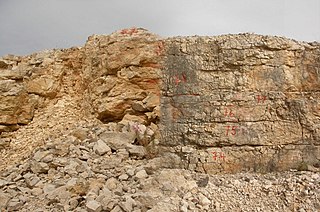
Armenia is a landlocked country in the South Caucasus region of the Caucasus. The country is geographically located in West Asia, within the Armenian plateau. Armenia is bordered on the north and east by Georgia and Azerbaijan and on the south and west by Iran, Azerbaijan's exclave Nakhchivan, and Turkey.

Cameroon, officially the Republic of Cameroon, is a country in Central Africa. It shares boundaries with Nigeria to the west and north, Chad to the northeast, the Central African Republic to the east, and Equatorial Guinea, Gabon, and the Republic of the Congo to the south. Its coastline lies on the Bight of Biafra, part of the Gulf of Guinea, and the Atlantic Ocean. Due to its strategic position at the crossroads between West Africa and Central Africa, it has been categorized as being in both camps. Cameroon's population of nearly 31 million people speak 250 native languages, in addition to the national tongues of English and French, or both. Early inhabitants of the territory included the Sao civilisation around Lake Chad and the Baka hunter-gatherers in the southeastern rainforest. Portuguese explorers reached the coast in the 15th century and named the area Rio dos Camarões, which became Cameroon in English. Fulani soldiers founded the Adamawa Emirate in the north in the 19th century, and various ethnic groups of the west and northwest established powerful chiefdoms and fondoms.

The French Armed Forces are the military forces of France. They consist of four military branches – the Army, the Navy, the Air and Space Force and the National Gendarmerie. The National Guard serves as the French Armed Forces' military reserve force. As stipulated by France's constitution, the president of France serves as commander-in-chief of the French military. France has the ninth largest defence budget in the world and the third largest in the European Union (EU). It also has the largest military by size in the EU. As of 2021, the total active personnel of the French Armed Forces is 270,000. While the reserve personnel is 63,700, for a total of 333,000 personnel. Including the active personnel of the National Gendarmerie, the total men power of all the French Armed Forces combined is 435,000 strong. A 2015 Credit Suisse report ranked the French Armed Forces as the world's sixth most powerful military.

Var is a department in the Provence-Alpes-Côte d'Azur region in Southeastern France. It is bordered on the east by the Alpes-Maritimes department; to the west by Bouches-du-Rhône; to the north of the river Verdon by the Alpes-de-Haute-Provence department; and to the south by the Mediterranean Sea. It had a population of 1,076,711 in 2019.

Larzac, also known as the Causse of Larzac, is a limestone karst plateau in the south of the Massif Central, France, situated between Millau and Lodève. It is an agricultural area, where traditionally sheep produce milk for Roquefort cheese. Since the early 2010s, the agricultural production has largely diversified.

Gergovia was a Gaulish town in modern Auvergne-Rhône-Alpes in the upper part of the basin of the Allier, near present-day Clermont-Ferrand. It was the capital of the Averni. The city of Gergovia had strong walls and was located on a giant raised plateau surrounded by hills.
The Battle of Gergovia took place in 52 BC in Gaul at Gergovia, the chief oppidum of the Arverni. The battle was fought between a Roman Republican army, led by proconsul Julius Caesar, and Gallic forces led by Vercingetorix, who was also the Arverni chieftain. The Romans attempted to besiege Gergovia, but miscommunication ruined the Roman plan. The Gallic cavalry counterattacked the confused Romans and sent them to flight, winning the battle.

National Research University "Moscow Power Engineering Institute" is a public university based in Moscow, Russia. It offers training in the fields of Power Engineering, Electric Engineering, Radio Engineering, Electronics, Information Technologies and Management.

Gaya is a city in the Gaya Department of the Dosso Region of Niger. The city is situated 254 km southeast of the capital, Niamey, is located on the banks of the Niger River, and is near the borders with Benin and Nigeria. Gaya has a population of 63,815. The wettest area in Niger, Gaya averages 800 mm in rainfall a year.

"Frenchelon" is the nickname given to the signal intelligence system operated by France. The name is a reference to its Anglo-American counterpart ECHELON.

Pleurosaurus is an extinct genus of aquatic reptiles belonging to the order Rhynchocephalia. Pleurosaurus fossils have primarily been discovered in the Solnhofen Limestone of Bavaria, Germany and the Canjuers lagerstatte near Canjuers, France, both dating to the Late Jurassic. It contains two species, P. goldfussi and P. ginsburgi.

Cycnorhamphus is a genus of gallodactylid ctenochasmatoid pterosaur from the Late Jurassic period of France and Germany, about 152 million years ago. It is synonymous with the genus Gallodactylus.

Île Longue is a peninsula of the roadstead of Brest in the department of Finistère in the Brittany region. It is the base of the French nuclear ballistic missile submarines, and as such one of the most secretive and heavily defended places in France.

Vérignon is a commune in the Var department in the Provence-Alpes-Côte d'Azur region in southeastern France.

Mauritania, formally the Islamic Republic of Mauritania, is a sovereign country in Northwest Africa. It is bordered by the Atlantic Ocean to the west, Western Sahara to the north and northwest, Algeria to the northeast, Mali to the east and southeast, and Senegal to the southwest. By land area Mauritania is the 11th-largest country in Africa and 28th-largest in the world; 90% of its territory is in the Sahara. Most of its population of some 4.3 million lives in the temperate south of the country, with roughly a third concentrated in the capital and largest city, Nouakchott, on the Atlantic coast.

The École Spéciale de Mécanique et d'Electricité, also known as ESME Sudria is a French private grande école founded in 1905. It is a part of the IONIS Education Group.

The 43rd G7 summit was held on 26–27 May 2017 in Taormina (ME), Sicily, Italy. In March 2014, the G7 declared that a meaningful discussion was currently not possible with Russia in the context of the G8. Since then, meetings have continued within the G7 process.

The Engin Blindé de Reconnaissance et de Combat Jaguar or EBRC Jaguar is a six-wheel armoured fighting vehicle developed and manufactured by KNDS France, Arquus and Thales. It is intended to succeed three reconnaissance and/or fire support vehicles in French service—the AMX-10 RC, ERC 90 Sagaie and VAB HOT—and entered service in 2022 after twelve years of development.

The Canjuers Lagerstätte is a Konservat-Lagerstätte located inside the military camp of Canjuers, in Haute Provence, in the Var department in South-East France.
Djado is a ghost town located in the department of Bilma in Niger. The settlement lies on the plateau with the same name. The settlement likely wasn't called Djado during its existence. The site is quite remote. No excavation has been done, so the real name of the settlement is unknown.


















